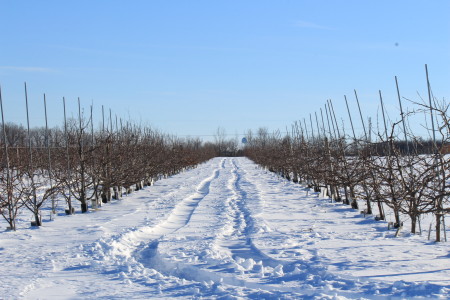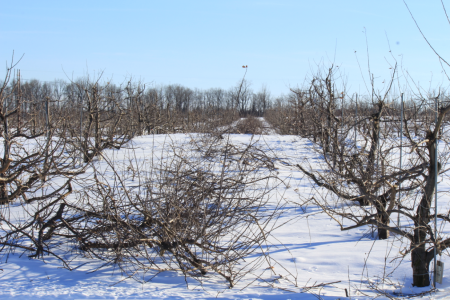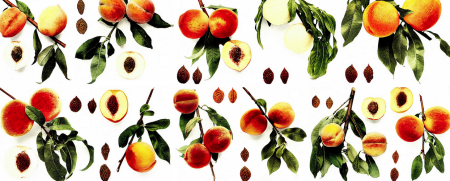- High-throughput genotyping for species identification and diversity assessment in germplasm collections.. 9% of random Brassicaceae samples from Australian Grains Genebank misidentified to species, with some interspecific hybrids.
- Methodology for enabling high-throughput simultaneous saccharification and fermentation screening of yeast using solid biomass as a substrate. Everything is now, now, now these days.
- Utilization of wild relatives of wheat, barley, maize and oat in developing abiotic and biotic stress tolerant new varieties. Useful summary table at the end.
- Patterns of SNP distribution provide a molecular basis for high genetic diversity and genetic differentiation in Vitis species. Different grape species are really different.
- Disentangling the relative effects of bushmeat availability on human nutrition in central Africa. Both rational use of some wild mammals for nutrition, and conservation of more vulnerable species, are possible, though in different places.
- Blast Resistant Genes Distribution and Resistance Reaction to Blast in Korean Landraces of Rice (Oryza sativa L.). Conventional evaluation of landraces is useless; you really need to look at the genes.
- Characterization of a collection of local varieties of tomato (Solanum lycopersicum L.) using conventional descriptors and the high-throughput phenomics tool Tomato Analyzer. Brave new world.
- Phylogenetic analysis of Saccharum s.l. (Poaceae; Andropogoneae), with emphasis on the circumscription of the South American species. Allopolyploid, with 2 species belonging in a different genus.
- Utilization of farm animal genetic resources in a changing agro-ecological environment in the Nordic countries. Need to phenotype and genotype everything. Now where have I heard that before?
- Multi-objective optimization for plant germplasm collection conservation of genetic resources based on molecular variability. Lots of data plus fancy maths can tell you which individuals you should add to an ex situ collection to maximize conserved diversity.
- Actual and Potential Applications of Moringa stenopetala, Underutilized Indigenous Vegetable of Southern Ethiopia: A Review. Potential as a source of drugs, but you need to learn to grow it.
- Olive in the story and art in Albania. There are old olive trees around castles.
Nibbles: Genebank data, Edible smut, Edible bugs, Healthful bluberries, Mining Indian food, Funny spuds pix, Old grape pits, Old einkorn stash, Phylogeny & conservation double, Rhizobacteria, Rapid phenotyping, Plata periurban ag, BRICs in Africa, Chinese terraces, SMTA
- GRIN-Global comes to Portugal. That makes two.
- Eating fungi.
- Eating bugs.
- Eating Indian.
- Eating blueberries is good for you.
- Would you eat these funny-looking potatoes?
- Veg ink.
- Old grape seed in Israel.
- Old einkorn seed in England.
- Atlas of Living Australia to include phylogenetic data. Kew thinking along same lines too.
- Grasses can absorb organic N. With some help.
- “Today’s international scientific community is dominated by big mercenaries who change their teams’ research subjects to get on the cover of Nature.” But INRA isn’t like that, apparently, at least with regards to high-throughput phenotyping.
- Argentinian periurban farmers grow varieties they like to eat. Well, it’s good to have the data.
- Rounding up China and Brazil in African agriculture.
- Meanwhile, back home, famous rice terraces are being used to grow maize.
- SMTA 101.
Apples in the snow
You may have heard about the difficult weather hitting the northeast of the United States. That includes Geneva, in New York State, which is home to the US national apple and grape genebank. Well, thanks to Thomas Chao, who’s in charge of those collections, you can now have a see what a field collection of apple looks like under a metre of snow. Here’s the core collections.

And this is a view of the general collection.

Thomas says these apples should be fine, though he’s a bit worried about some of the grapes. Fingers crossed.
People take genebanks for granted. But they take a lot of looking after, and they can be so vulnerable it is scary.
Nibbles: Citrus greening, Deforestation, OFSP, Sugarbeet breeding, Poverty & conservation, Indian tribals, Eat This Podcast, Musalit, Solomon Island bananas, Potato somaclonal variation, Genebank data management, WorldVeg DG search
- Getting to grips with citrus greening.
- A review of the effect of oil palm, soybean, and jatropha production on biodiversity and ecosystem functions in tropical forests is in the offing. Here’s what will be done.
- Sweet potatoes are good for the health of children. If you can get them to eat the things.
- The history of monogerm sugar beet.
- There’s no best way to link poverty alleviation and biodiversity conservation. The Global Meeting of the Indigenous Peoples’ Forum came up with a few ways, I’m sure.
- Vegetarian tribe in India is certainly doing that conservation, but the poverty alleviation?
- Jeremy takes a stroll around the allotment.
- Musalit is back in the game. And speaking of which, who would not have wanted to be at the Makira Banana Festival?
- Squeezing the most out of Russet Burbank. Oh, look at some new landraces, already!
- Portugal becomes second genebank to adopt GRIN-Global.
- AVRDC is looking for its next leader. Must know his/her onions.
Peachy photos online
Not only is U.P. Hedrick’s magisterial The Peaches of New York on Open Library. The images are also on Flickr, under Internet Archive Book Images. Mouthwatering.
